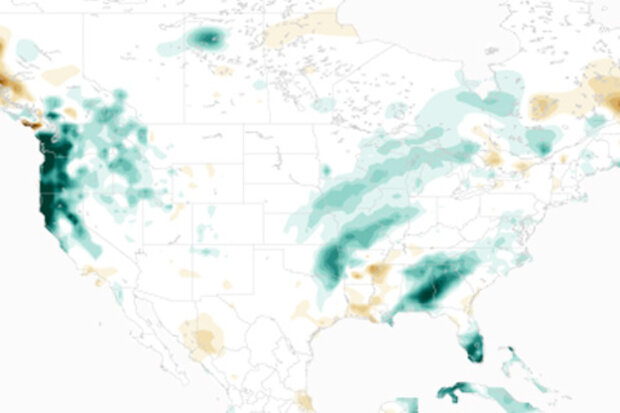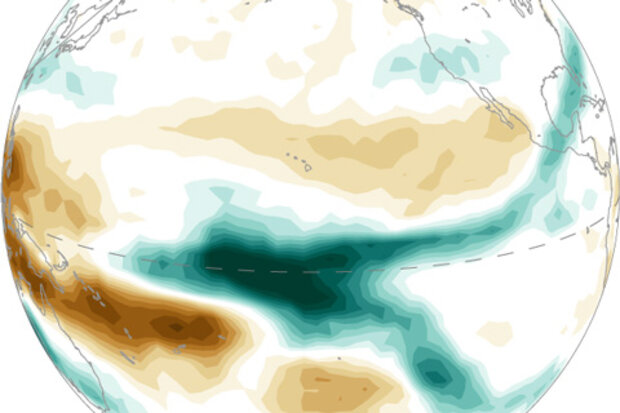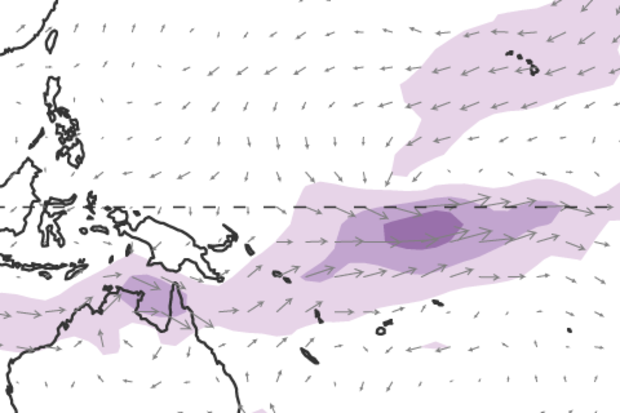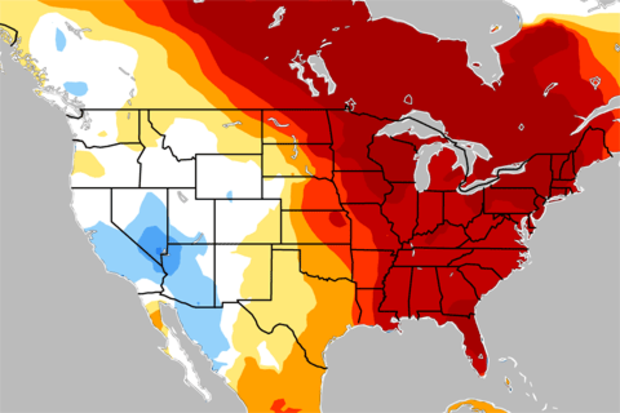ENSO Blog
Is El Niño missing? What happened to the rainfall I was promised? What is going on? Some quick answers for those who don't want to read it all (but then you’ll miss the graphical awesomeness I coded up with an assist from climate.gov staff. So read to the end. Please.):
I. No. It’s still here. Based on measurements of sea surface temperature in the tropical Pacific Ocean, this El Niño is the biggest event we’ve seen in almost twenty years.
II. NOAA CPC climate forecasters don’t promise precipitation. For some regions of the U.S., we provide seasonal outlooks for an increased chance of precipitation over a span of a 3-month (seasonal) average.
III. I rea…
Read article
Despite getting a little boost from some strong winds across the tropical Pacific Ocean in January, the warmer-than-average ocean temperatures that drive El Niño have likely peaked. Now that we’re looking out from the other side of the mountain, let’s answer some questions.
So is this the strongest El Niño on record, or what?
This is definitely one of the strongest three going back to 1950. It’s hard to say definitively what single El Niño is the strongest, because there are a lot of different ways to measure strength.
The Oceanic Niño Index, the three-month-average sea surface temperature departure from the long-term normal in one region of the Pacific Ocean, is the primary n…
Read article
As the strong El Niño begins weakening later this winter and spring 2016, some clever folks may wonder whether La Niña conditions might develop in the second half of the year. The figure below shows the variations of the 3-month average sea surface temperature departures from average (the anomaly) in the Niño3.4 region, using the ERSSTv4 data (footnote 1).
You can see that sometimes La Niña does occur the year after a significant El Niño, like after the El Niño events of 1997-98, 1972-73 and 2009-10. But it doesn’t always happen, such as after the events of 1991-92 and 2002-03.
Can we estimate how likely a switchover is from an El Niño to a La Niña for the following year? And does …
Read article
Happy New Year! December was an action-packed month, El Niño-wise. We’ll take a look at what happened in the tropical Pacific and around the world.
Out with the old
El Niño put up some pretty impressive numbers in December. The Niño3.4 index, which compares ocean surface temperatures in the east-central Pacific to the long-term average, broke the record in December, coming in at 2.38°C above average, surpassing December 1997’s 2.24°C. (This is using the ERSSTv4, the most historically consistent sea surface data we have.)
El Niño is ultimately measured on seasonal timescales, though, so the average of the sea surface temperature anomaly (departure from the long-term average) over thr…
Read article
For the first time ever my extended family did our Christmas gift exchange outside on my aunt’s patio in the Washington DC area. We did our best imitation of a Florida vacation: We abandoned hot cider in favor of tropical beverages. Some of us wore t-shirts and sandals. We played catch with the dogs. Jimmy Buffet stopped by. Okay, maybe not, but it was still totally awesome.
But, what on earth was going on with the weather? Let’s zoom out and look at November and December together because they were fairly similar. As you can see below, temperatures were strongly above-average across much of North America (shown by the yellow/orange/red s…
Read article




